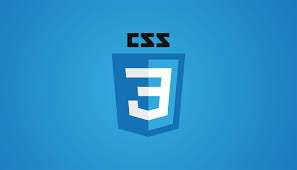Title: CSS Best Tutorial: A Comprehensive Guide for Beginners
Cascading Style Sheets, commonly known as CSS, are a fundamental part of web development. They give life to web pages by styling and formatting content. If you’re new to CSS and looking for the best tutorial to get started, you’re in the right place. In this article, we will provide you with a comprehensive guide on CSS for beginners, offering easy explanations and essential tips.

What is CSS?
CSS is a stylesheet language used to control the presentation and layout of web documents, including HTML and XML documents. In simpler terms, CSS is what makes web pages look visually appealing and organized. It allows you to define the colors, fonts, spacing, and positioning of elements on a webpage.
Setting Up for CSS
Before diving into CSS, you need to have an HTML document to work with. HTML is the markup language that defines the structure of your webpage, while CSS focuses on styling that structure. You can create an HTML document using a text editor like Notepad or a code editor like Visual Studio Code.
Here’s a basic HTML structure:
<!DOCTYPE html>
<html>
<head>
<title>My Webpage</title>
<link rel="stylesheet" type="text/css" href="styles.css">
</head>
<body>
<h1>Hello, CSS!</h1>
<p>This is a paragraph of text.</p>
</body>
</html>In the code above, we link an external CSS file named “styles.css” to our HTML document. This is a common practice to keep your CSS separate from your HTML for better organization.
CSS Basics
Selectors
Selectors are patterns used to select and style HTML elements. The most common selectors are:
- Element Selector: Selects all elements of a specific type (e.g.,
pfor paragraphs). - Class Selector: Selects elements with a specific class attribute (e.g.,
.highlight). - ID Selector: Selects a single element with a specific ID attribute (e.g.,
#header).
Properties and Values
CSS properties define what aspect of an element you want to style, while values specify how you want to style it. For example:
p {
color: blue;
font-size: 16px;
}In this CSS code, we are styling all <p> elements to have blue text and a font size of 16 pixels.
Comments
You can add comments to your CSS code using /* */. Comments are ignored by the browser and are useful for documenting your code:
/* This is a CSS comment */
p {
color: red; /* Change text color to red */
}CSS Box Model
Understanding the CSS box model is essential for layout and spacing. It consists of four components: content, padding, border, and margin.
- Content: The actual content (text or images) inside the element.
- Padding: The space between the content and the element’s border.
- Border: The border around the padding and content.
- Margin: The space outside the element’s border, creating separation from other elements.
.box {
width: 200px;
height: 100px;
padding: 20px;
border: 2px solid black;
margin: 10px;
}CSS Layout
CSS allows you to control the layout of your webpage. Common properties and techniques include:
- Display: Defines how an element should be displayed (e.g.,
block,inline,flex). - Position: Controls the positioning of an element (e.g.,
relative,absolute,fixed). - Float: Moves an element to the left or right within its container.
- Flexbox: A powerful layout system for arranging elements in a row or column.
- Grid: A two-dimensional layout system for creating complex grid-based layouts.
CSS Best Practices
Here are some best practices to keep in mind as you learn CSS:
- Use External Stylesheets: Keep your CSS separate from your HTML by using external stylesheets. This promotes reusability and maintainability.
- Be Consistent: Use consistent naming conventions for classes and IDs to make your CSS easier to understand.
- Comment Your Code: Add comments to explain complex or unusual styles and layout decisions.
- Test Across Browsers: Test your CSS in multiple web browsers to ensure compatibility.
- Embrace Responsive Design: Learn about media queries and responsive design principles to create websites that adapt to different screen sizes.
- Learn from Others: Study websites you admire and inspect their CSS to see how they achieved certain effects or layouts.
- Practice Regularly: The more you practice writing CSS, the more proficient you’ll become. Try recreating webpage designs or taking on small CSS challenges.
Online CSS Resources
As you embark on your CSS journey, here are some online resources to help you learn and practice:
- Mozilla Developer Network (MDN): MDN offers comprehensive CSS documentation and tutorials.
- Codecademy: Codecademy provides interactive CSS courses suitable for beginners.
- CSS-Tricks: CSS-Tricks is a website filled with CSS tutorials, articles, and tips.
- CodePen: CodePen allows you to experiment with HTML, CSS, and JavaScript in a sandbox environment.
- W3Schools: W3Schools offers beginner-friendly CSS tutorials and a code editor for practice.
Conclusion
CSS is a vital skill for anyone interested in web development. While it may seem daunting at first, with practice and a willingness to learn, you can become proficient in CSS and create visually stunning web pages. Remember to start with the basics, be patient with yourself, and leverage online resources to enhance your CSS knowledge. Happy coding!

Pingback: How to become Full stack java developer in 10 dayes